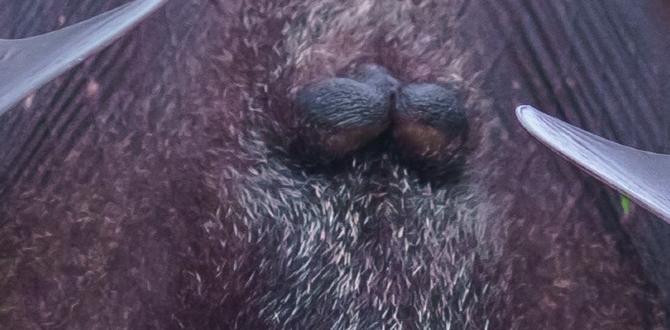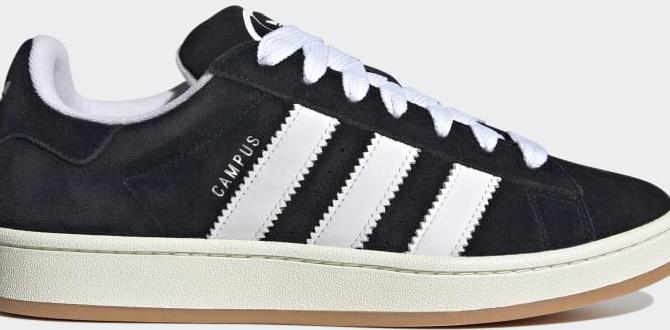Proper catcher’s shin guards are crucial for protecting young players’ legs from impacts, ensuring safety and confidence behind the plate. Choosing the right pair involves considering size, material, and fit to provide optimal defense and allow full mobility for effective play.
Stepping up to the catcher’s position is a thrilling, yet demanding role in baseball. One of the most important pieces of gear a young catcher needs is a solid pair of shin guards. Without them, those fast pitches and foul tips can lead to painful injuries, stopping a player’s game before it even gets rolling. It’s easy to feel a little overwhelmed by all the options out there, but don’t worry! We’re going to break down exactly what you need to know to find the perfect shin guards for your young slugger, ensuring they can block, frame, and throw with confidence and safety.
Why Catchers Shin Guards Are a Must-Have
Think of catcher’s shin guards as the ultimate defense for a young player’s legs. When a batter swings and misses, or a pitch bounces in the dirt, those impacts can travel right up the leg. Shin guards act as a protective barrier, absorbing that force and preventing serious injuries like bruises, fractures, or cuts. For youth players, who are still developing their coordination and might not always react perfectly, this protection is absolutely essential. It allows them to focus on the game and their performance, rather than worrying about getting hurt.
Beyond just injury prevention, well-fitting shin guards contribute to confidence. When a player knows their legs are protected, they’re more likely to feel secure squatting for extended periods, blocking pitches in the dirt, and diving to make a play. This added confidence can translate directly into better performance on the field. They can concentrate on their stance, their framing, and their throwing, knowing their lower legs have a solid layer of defense.
The Anatomy of Catcher’s Shin Guards
Understanding the different parts of catcher’s shin guards can help you make a more informed choice. Most youth shin guards are designed with a few key components to offer comprehensive protection and comfort:
- Outer Shell: This is the tough, outer layer, usually made of durable plastic or a strong synthetic material. It’s designed to deflect direct impacts and spread the force over a wider area.
- Padding: Beneath the shell, you’ll find layers of foam padding. This is what absorbs the shock from impacts. The density and thickness of this padding vary between models and brands. Higher-end guards often have more advanced, multi-density padding.
- Straps: These adjustable straps are crucial for securing the shin guards to the player’s legs. They typically attach with Velcro. The number and placement of straps ensure a snug fit, preventing the guards from shifting during play.
- Knee Cap/Patella Protection: Many shin guards include a separate, often hinged, knee cap that extends upwards to protect the knee joint itself. This is vital for catchers who spend a lot of time in a low squat.
- Ankle and Foot Protection: Some designs extend coverage down to the ankle and even offer some protection for the top of the foot. This can be a crucial feature for catchers who get a lot of foul tips near their feet.
Choosing the Right Size: The Key to Fit and Protection
The single most important factor when selecting catcher’s shin guards for youth players is getting the size right. Shin guards that are too small won’t offer adequate coverage, leaving vulnerable areas exposed. Conversely, shin guards that are too large can be bulky, restrictive, and may slip down, compromising both protection and mobility.
How to Measure for Shin Guards
Most manufacturers provide sizing charts, but the best way to ensure a good fit is to measure your player’s legs. Here’s how:
- Measure from the middle of the kneecap down to the ankle bone. Have your child stand straight with their foot flat on the floor.
- Use a flexible measuring tape for accuracy.
- Consult the manufacturer’s size chart. Compare your measurement to the chart provided by the brand you are considering.
It’s also helpful to consider the player’s height and general build. A taller player might need a slightly longer guard, even if their leg measurement is on the cusp of a size. Always err on the side of slightly larger if you’re between sizes, as some adjustability with the straps can compensate. However, remember that too much extra length can be problematic too.
Understanding Youth Sizing Categories
Youth shin guards generally fall into a few common size categories, often based on age or shoe size:
- Youth Small (YS): Typically for younger players, ages 5-8, or those with smaller builds. Often corresponds to shoe sizes 1-3.
- Youth Medium (YM): For players in the middle age range, ages 8-12, or with average builds. Often corresponds to shoe sizes 4-6.
- Youth Large (YL): For older youth players, ages 12-14, or those with larger builds. Often corresponds to shoe sizes 7-9.
These are general guidelines, and it’s always best to check specific brand sizing. Some brands might offer an “Intermediate” size that bridges the gap between youth and adult gear.
Materials and Durability: What to Look For
The materials used in catcher’s shin guards directly impact their durability, protection level, and weight. For youth players, a balance of these factors is key.
Common Materials in Youth Shin Guards
- Plastic (PVC, ABS): Most common for the outer shell due to its impact resistance, affordability, and ease of molding into protective shapes.
- Foam (EVA, Polyurethane): Used for padding. EVA foam is common, offering a good balance of cushioning and durability. Higher-end guards might use more advanced, multi-density foams for superior shock absorption.
- Nylon/Mesh: Often used for the inner lining or as part of the strap system for comfort and breathability.
Durability Factors
When evaluating durability, consider:
- Thickness of the plastic shell.
- Quality of the padding – does it feel firm and resilient, or easily compressed?
- Sturdiness of the straps and buckles – will they hold up to frequent use and washing?
- Reinforcement in high-impact areas, like the knee cap and front of the shin.
While you don’t need the most expensive, professional-grade gear for a youth player, investing in a reputable brand known for quality construction will ensure the shin guards last longer and offer consistent protection. A quick search for “baseball equipment durability standards” might lead you to resources from organizations like the National Federation of State High School Associations (NFHS), which emphasizes athlete safety and product integrity.
Key Features for Comfort and Performance
Protection is paramount, but comfort and performance features can make a big difference in how much a young player actually wears and uses their shin guards.
Ventilation
Baseball games can get hot, and sitting in a squat for innings can be even hotter, especially behind home plate. Shin guards with good ventilation can help keep legs cooler and more comfortable. Look for models with ventilation holes or channels in the plastic shell.
Lightweight Design
While padding is important, overly heavy shin guards can feel cumbersome and fatigue a young player more quickly. Modern designs often balance robust protection with a surprisingly lightweight feel. This allows for better agility and less strain.
Adjustability
The straps are the primary adjustment point, but some shin guards also feature hinged designs or adjustable panels. These allow for a more customized fit, accommodating different leg shapes and providing better freedom of movement, especially when bending the knee.
Removable Liners
Many higher-quality shin guards have removable and washable inner liners. This is a game-changer for hygiene and odor control, as catcher’s gear can get quite… aromatic! Being able to wash the liners keeps the gear fresh and more pleasant to wear.
Important Protective Elements to Consider
Beyond the basic shell and padding, certain protective elements are particularly important for young catchers.
Knee Protection
The knee is exceptionally vulnerable when squatting, and foul tips can easily find their mark. Shin guards with robust, often hinged, knee caps are highly recommended. This added piece of plastic or reinforced padding over the kneecap offers a crucial layer of defense against direct impacts and hyperextension.
Ankle and Foot Coverage
Some shin guards offer extended protection that wraps around the ankle or even covers the top of the foot. For catchers who tend to get a lot of passed balls or low pitches that bounce, this extra coverage can prevent painful stubbed toes or ankle impacts. Assess your young catcher’s tendencies and the pitching style they usually face to determine if this is a necessary feature.
Hinged vs. Solid Designs
- Solid Designs: These offer maximum protection but can sometimes feel less comfortable or restrictive in the knee joint.
- Hinged Designs: These have a break or hinge at the knee, allowing for more natural leg bending and greater comfort during long periods of squatting. They offer excellent protection while maintaining flexibility. For most youth catchers, a good hinged design provides the best balance of protection and mobility.
Comparing Youth Catcher’s Shin Guard Models
To give you a clearer picture, let’s look at how some popular brands approach youth catcher’s shin guard design. While specific models change annually, the general philosophy and features remain consistent.
Featured Youth Catcher’s Shin Guard Examples
Here’s a look at what you might find on the market. Remember to always check the latest models for specific innovations.
| Brand Example | Key Features | Target Player | Price Range (Approx.) |
|---|---|---|---|
| All-Star Youth Series | Durable plastic shell, multi-layer padding, hinged knee design, secure Velcro straps, breathable liner. | Beginner to intermediate youth players. Good all-around protection and comfort. | $$ (Mid-range) |
| Wilson EZ Gear Series | Lightweight construction, extended ankle protection, comfortable padding, easy-on/off straps. | Younger players or those prioritizing agility. Simple and effective. | $ (Entry-level) |
| Easton Game Softball/Baseball Youth | Extended knee and shin coverage, reinforced patella protection, advanced padding systems, excellent ventilation. | Players seeking maximum protection, often for more competitive leagues. | $$$ (Higher-end youth) |
| Rip-It Catcher’s Gear | Focus on advanced materials, often with a “smart impact” system for better shock absorption, excellent fit and comfort features, sometimes unique colorways. | Intermediate to advanced youth players, or those who are very serious about their gear. | $$$ (Higher-end youth) |
When checking out these options, look for reviews that specifically mention how well they fit and protect younger players. Websites like Glove America or dedicated baseball equipment retailers often have detailed customer feedback.
Factors Influencing Price
The price of youth catcher’s shin guards can vary significantly. Generally, you’re paying for:
- Material Quality: More advanced plastics and denser, multi-layer foams cost more.
- Design Complexity: Hinged designs, extended coverage, and advanced ventilation systems add to the cost.
- Brand Reputation: Well-known brands often command slightly higher prices due to perceived quality and performance.
- Protective Features: Enhanced knee, ankle, and foot protection contributes to a higher price point.
For most recreational leagues and practice, a mid-range option from a reputable brand will provide more than adequate protection. If your player is in a highly competitive league or plays catcher frequently, investing in a slightly higher-end model might be worth the added protection and durability.
How to Properly Wear and Adjust Shin Guards
Even the best shin guards won’t work if they aren’t worn correctly. Proper adjustment ensures maximum protection and comfort.
Step-by-Step Wearing Guide
- Positioning: Sit down or have the player stand while you help them. Place the shin guard on their leg so the knee cap of the guard aligns with their kneecap. The bottom of the guard should rest just above their cleats.
- Secure the Top Strap: Fasten the uppermost strap first. It should be snug but not so tight that it cuts off circulation or restricts bending the knee.
- Secure the Middle Strap: Fasten the middle strap, ensuring it provides a secure fit without extra bulk.
- Secure the Bottom Strap: Fasten the lowest strap, which often goes around the calf or just above the ankle. This helps keep the guard from slipping down.
- Check for Gaps: Ensure there are no significant gaps between the guard and the leg, especially around the sides of the knee and shin.
- Test Movement: Have the player stand up and go through a squatting motion. The shin guards should stay in place comfortably, allowing for a full range of motion without bunching or pinching.
Tips for a Secure Fit
- Don’t Overtighten: Too-tight straps can cause discomfort, restrict blood flow, and even lead to chafing. Aim for snug and secure.
- Check Before Each Use: A quick check of the straps before every practice or game ensures they haven’t loosened.
- Consider Sock Thickness: The thickness of the socks worn can affect the fit. A player might need slightly looser straps with thicker socks.
- Listen to the Player: If the player complains of pinching, tightness, or the guard slipping, troubleshoot the fit.
Maintenance and Care for Longevity
Proper care will make your youth catcher’s shin guards last longer and stay hygienic.
Cleaning Your Shin Guards
The most effective way to clean them is:
- Remove Liners: If your shin guards have removable liners, take them out.
- Hand Wash Liners: Wash them by hand with mild soap and cool water. Squeeze out excess water gently and let them air dry completely. Do NOT put them in a dryer, as heat can damage foam and plastic.
- Wipe Down Shells: Use a damp cloth to wipe down the plastic shells and any non-removable padding. A mixture of mild soap and water works well.
- Dry Thoroughly: Ensure all parts are completely dry before storing them to prevent mold or mildew.
Storage Tips
When not in use, store shin guards in a cool, dry place, away from direct sunlight. Avoid cramming them into a tight equipment bag with other gear, which can cause them to warp or get damaged. Letting them air out after use is also a good practice.
Frequently Asked Questions About Youth Catcher Shin Guards
Q1: How often do youth catcher’s shin guards need to be replaced?
A1: This depends on the quality of the shin guards, how often they are used, and the level of play. For recreational use, they might last 2-3 seasons. For more serious players, or if there are signs of significant wear (cracks, deep dents in the padding, broken straps), it’s time for a new pair.
Q2: Can my child use adult shin guards if youth sizes are too small?
A2: It’s generally not recommended. Adult shin guards are designed for larger legs and might be too bulky and restrictive for a youth player, leading to awkward movement or tripping. Always try to find the correct youth size or an intermediate size if available.
Q3: Do shin guards affect a player’s running speed?
A3: Well-fitting, lightweight shin guards should have minimal impact on a player’s speed. If they feel overly heavy or restrictive, it might indicate they are too large or not designed for agility. Proper fit is key to maintaining mobility.
Q4: Are there specific shin guard requirements for different baseball leagues?
A4: Most youth leagues require catchers to wear shin guards as part of their protective equipment. While specific designs aren’t usually mandated, they must meet general safety standards. It’s always a good idea to check your league’s rulebook for any specific requirements.
Q5: How can I tell if shin guards are providing enough protection?
A5: If the player feels impacts keenly through the shin guards or experiences significant bruising after blocking pitches, the protection might be insufficient. Also, ensure the guards cover the entire shin from the knee down to the ankle bone without leaving gaps, especially when in a catching squat.




